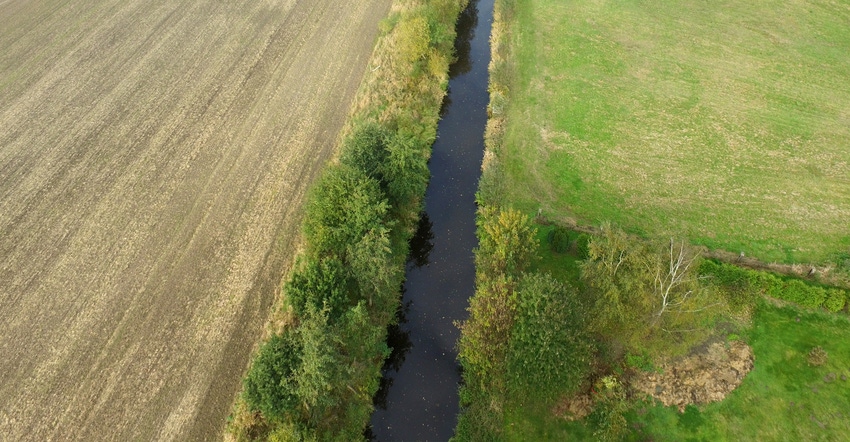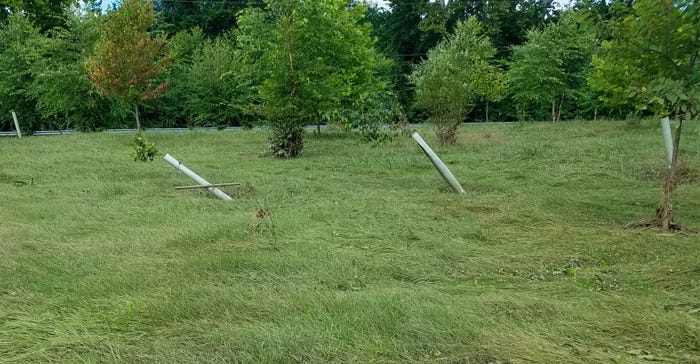August 30, 2018

By Kristen Kyler
Newly installed riparian forest buffer repair is not as pressing as repair on homes or businesses, but it is critical to conduct an inspection after significant storms and rainfall events occur.
The long periods of rainfall this summer have caused increased flow in many streams and, in some cases, flooding. Newly established buffers are at extreme risk during these events because the shallow roots are contained within the range of erodible soil.
Water and debris that flow through the riparian zones can also push stakes and tubes down, or completely remove them from the buffer, which leaves the trees exposed and vulnerable.
As soon as possible, walk through the buffer and look for stakes and tubes that are removed or bent over. It is helpful to pinpoint areas where the flow was greatest and where the trees are at most risk. Stakes and tubes that have been pushed down can bend the young trees, causing irregular growth or death to the tree, so re-staking these tubes can help bring the tree back to its original position. Any missing tubes should be replaced to prevent wildlife from foraging on the exposed trees.
 TREE SHELTER DAMAGE: Heavy rains have likely damaged tree shelters used to establish riparian buffers on farms.
TREE SHELTER DAMAGE: Heavy rains have likely damaged tree shelters used to establish riparian buffers on farms.

It is also important to look beneath the tube at the soil surrounding the base of the tree. Since this area is typically free of weeds and other vegetation, the soil is exposed and vulnerable to erosion. It is crucial to replace any soil that has been washed away, leaving roots exposed.
Lastly, water that is flowing around tree tubes can cause dead vegetation and other debris to build up inside and around the tube, so inspect inside the tubes and clear out any debris that may block the sunlight to the tree. This includes removing any debris caught on the limbs above the tube, too.
Inspection and repair to riparian buffers after significant rainfall or storm events can help ensure the success of the buffer. It is essential to repair any damage to the buffer when the area is safe to enter so the trees can continue to thrive.
While routine maintenance is conducted throughout the year, large rainfall events can cause significant damage to buffers and should be considered when planning for buffer maintenance.
Kyler is the project coordinator for Penn State’s Lower Susquehanna Initiative
You May Also Like




